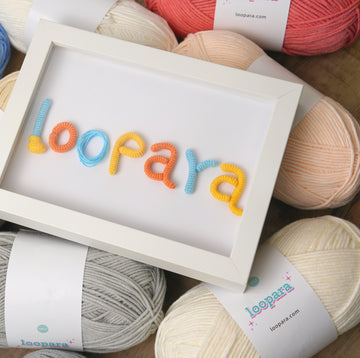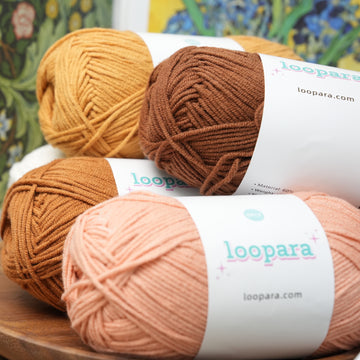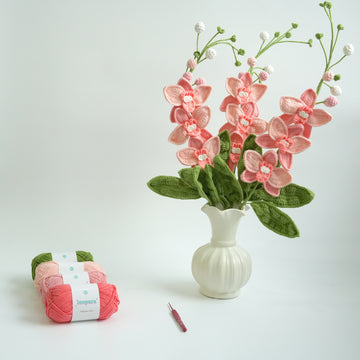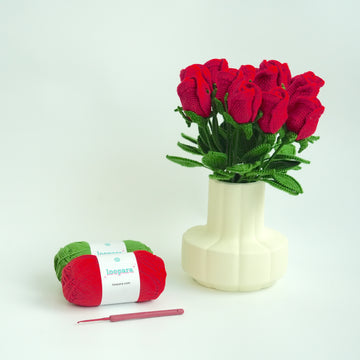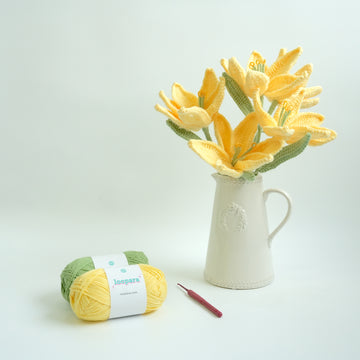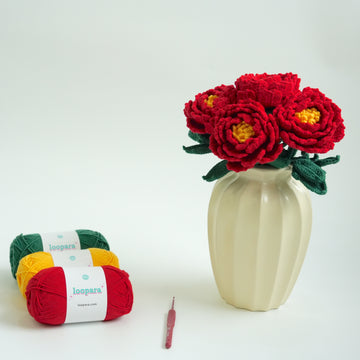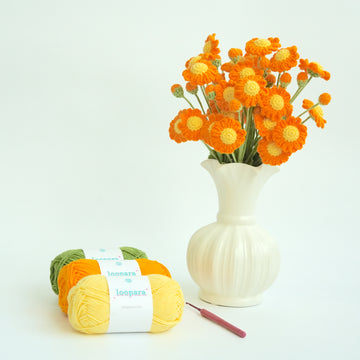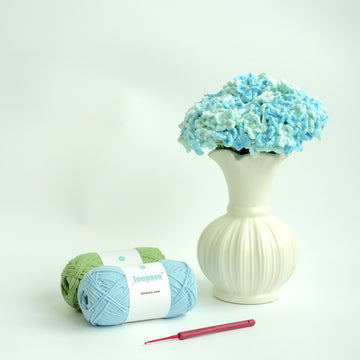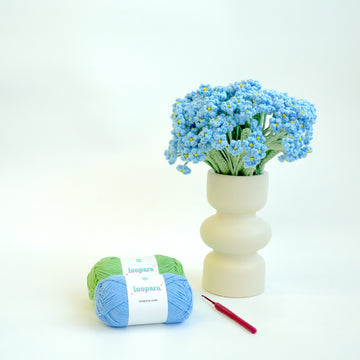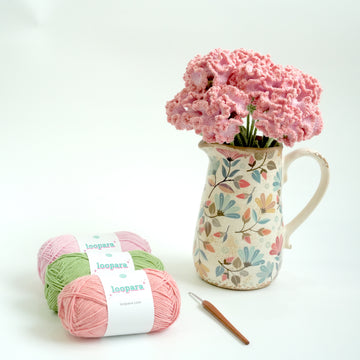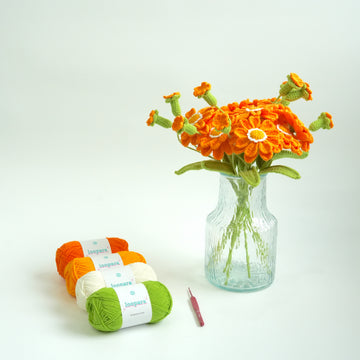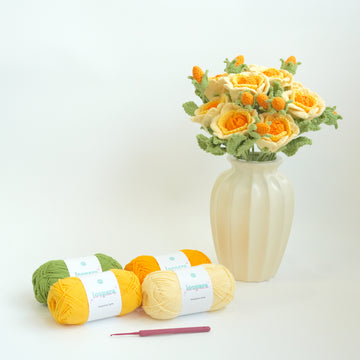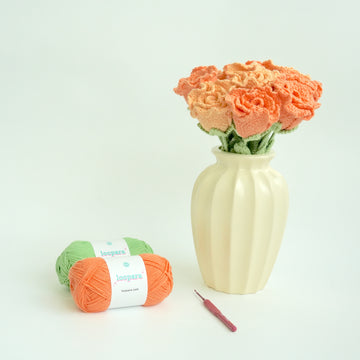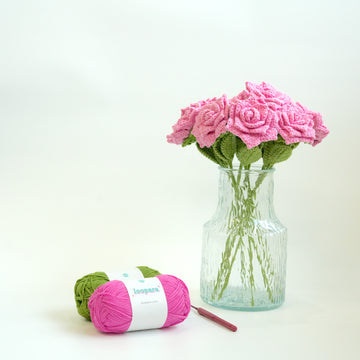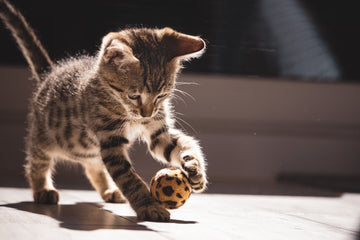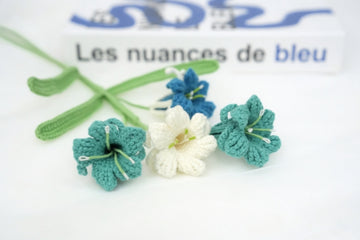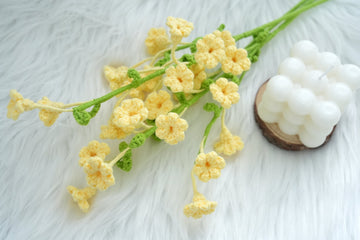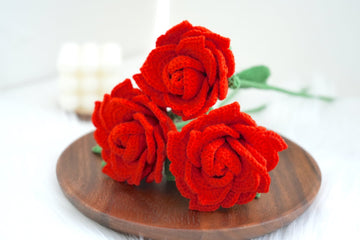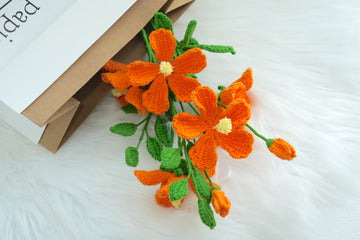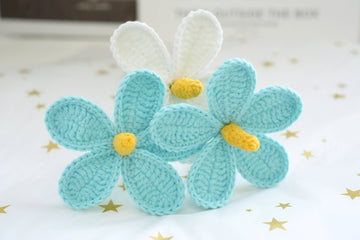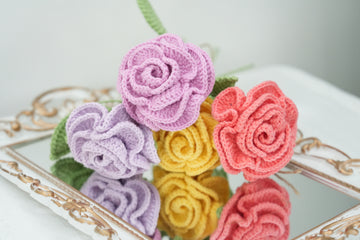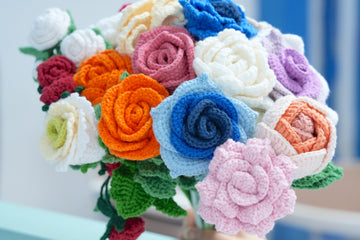Ready to add a touch of Peruvian magic to your crochet collection? Let's dive into the world of the Peruvian daffodil, also known as Ismene. I fell in love with these stunning flowers during a trip to South America, and I just had to recreate their unique, spider-like petals in yarn!
Did you know these beauties are nicknamed spider lilies because of their long, spidery petals? They're not your typical daffodil, but they're every bit as enchanting. In this tutorial, I'll guide you through each step to create your own everlasting Peruvian daffodil. Get ready to craft a flower that's sure to be a conversation starter!
Pin for Later
Save this pattern for your next project - you'll want these exotic Peruvian daffodils adding a touch of South American flair to your crochet garden soon!

Want to add more blooms to your crochet bouquet? I've got a bunch of free tutorials to help you create all sorts of beautiful flowers! Here is our full crochet flower pattern list (updating weekly).
To ensure you can find the right crochet flower patterns you want quickly, I also did some classification for you, all free!
- Large Crochet Flower Pattern list
- Small Crochet Flower Pattern list
- Crochet Rose Pattern list
- Crochet Flower Applique Pattern list
- Crochet Leaf Pattern List
Daffodil Meanings & Usages
Peruvian daffodils, or Ismene, are like the exotic cousins of the classic daffodil family. They symbolize creativity, mystery, and a touch of the unexpected. In bouquets, these spider-like blooms are total showstoppers, adding a dramatic flair that's hard to ignore.
I'll never forget the time I crocheted a Peruvian daffodil for my artist friend's gallery opening. As I handed her the unique flower, I explained how it represents creativity and thinking outside the box. Her eyes lit up, and she immediately placed it next to her most avant-garde piece. It became a conversation starter all night, with guests marveling at both the real and crocheted versions I had brought.
These flowers are perfect for anyone embarking on a new creative journey or for those who appreciate the unusual. In Peru, they're often associated with the ancient Inca civilization, adding a touch of history to their allure. Whether you're encouraging a friend to pursue their passions or simply want to add a bit of intrigue to someone's day, a Peruvian daffodil (real or crocheted) is a unique choice that says, Embrace your quirks and let your creativity bloom!
Details of Daffodil Crochet Pattern

This Peruvian daffodil (Ismene) crochet pattern is perfect for intermediate crocheters looking to add a unique bloom to their repertoire. Don't worry if you're an ambitious beginner – with some patience, you can tackle this exotic beauty too!
The pattern involves creating two distinct flower parts, each with its own petal structure, plus two leaves and eight flower centers. You'll be working with a variety of stitches, including some fun bobble stitches for texture. The process mimics the flower's natural growth, building from the center outwards to create those signature spidery petals.
In nature, Peruvian daffodils come in white, yellow, and even some rare pink varieties. Fun fact: these flowers are sometimes called basket flowers because of how their petals curve upwards!
Feel free to customize your Ismene. Play with different color combinations – maybe a two-tone effect for the petals? You could also adjust the number of petals or add more leaves for a fuller look.
A single finished Peruvian daffodil measures about 4-5 inches in diameter and 14-15 inches in length, including the stem. Want to make a statement? A bouquet of 3-5 flowers creates a stunning arrangement about 7-10 inches wide and 16-18 inches tall. It's a perfect project to bring a touch of South American flair to your home!
Crochet Daffodil Bouquet Kits

Bring the exotic beauty of Peru into your home with our Peruvian Daffodil Crochet Kit! Perfect for adventurous crafters, this all-inclusive package contains everything you need to create stunning, lifelike Ismene flowers. Craft your own unique bouquet or give an unforgettable handmade gift. Start your South American-inspired crochet garden today!
Materials Needed
- Yarn –Loopara 4ply combed cotton (White 02, Green 09 and Green 24)
- Hook – 2.0mm
- Flower stem– 30cm (No.2)
- Iron wire – 0.5mm
- Hot melt adhesive
- Stitch marker
- Scissors

Abbreviations (US Terms)
- ch - chain
- sc - single crochet
- hdc - half double crochet
- dc - double crochet
- tr - treble crochet
- dtr - double treble crochet
- tr tr - triple treble crochet
- sl st - slip stitch
- inc - increase (work 2 stitches in same stitch)
- bo - bobble stitch
- st - stitch
Crochet Daffodil Pattern
How to Crochet Flower One (Make 2)

Round 1: Create a magic ring. Chain 1, work 4 single crochets into the ring. Slip stitch to join, chain 1.
Round 2: (Single crochet, single crochet increase) twice. Slip stitch, chain 1.
Round 3: (Single crochet increase, 2 single crochets) twice. Slip stitch, chain 1.
Round 4: 2 single crochets, increase, 3 single crochets, increase, single crochet. Slip stitch, chain 1.
Round 5: (Single crochet increase, 4 single crochets) twice. Slip stitch, chain 1.
Round 6: 2 single crochets, increase, 9 single crochets. Slip stitch, chain 1.
Round 7: 5 single crochets, increase, 7 single crochets. Slip stitch, chain 1.
Round 8: 8 single crochets, increase, 5 single crochets. Slip stitch, chain 1.
Round 9: 11 single crochets, increase, 3 single crochets. Slip stitch, chain 1.
Round 10: 14 single crochets, increase, single crochet. Slip stitch, chain 1.

Round 11: Increase, 16 single crochets. Slip stitch.

Round 12: (Chain 4, double treble crochet, triple treble crochet) (3 bobble stitches, 4 bobble stitches) (double treble crochet, chain 4, slip stitch) slip stitch. Repeat 6 times, slip stitch to join.

Remember to make two of these flower pieces for each Peruvian Daffodil you're creating.
Tips: When working the first round of, keep the magic ring loose. Don't pull it too tight, as you'll need to thread wire through it later. This looser start will make assembly easier and allow your flower to maintain its shape better.
How to Crochet Flower Two (Make 2)

Round 1: Create a magic ring. Work 6 single crochets into the ring. Slip stitch to join, chain 1.

Round 2: Repeat the following sequence 6 times to create the petals: Chain 21. Work 2 single crochets in the second chain from the hook. Work 18 slip stitches along the chain. Slip stitch into the base of the petal (into the magic ring). After creating all 6 petals, slip stitch to join the round.
Remember to make two of these flower pieces for each Peruvian Daffodil you're creating. This two-part flower construction is what gives the Ismene its unique, layered appearance.
Tips: When working the long chains for the petals, try to keep your tension even. This will ensure all petals are the same size. The slip stitches along the chain create the delicate, curved shape of the Ismene's petals, so work them loosely to maintain the petal's flexibility. Don't worry if your petals seem a bit floppy at this stage - they'll gain structure when assembled with Flower One.
How to Crochet Leaves (Make 2)

Round 1: Chain 39. Add wire to the last chain for structure. Slip stitch, then chain 1 to prepare for the next round.

Round 2: Work a slip stitch in the second chain from the hook. Single crochet in the next stitch. Work 35 half double crochets. Work 3 single crochets in the next stitch to create the leaf tip. Work 35 half double crochets down the other side of the chain. Single crochet in the next stitch. Slip stitch in the last stitch. Slip stitch to join the round.
Remember to make two leaves for each Peruvian Daffodil.
Tips: When adding wire to your leaf, be careful to encase it fully within your stitches to prevent it from showing or poking through. Maintain consistent tension throughout to ensure both sides of the leaf are symmetrical. The combination of stitches used creates the elongated shape typical of Ismene leaves. After completing the leaf, gently shape the wire to give a natural curve.
How to Crochet Flower Center (Make 8)

Take your white yarn and split it into a single strand. Cut a piece of wire 30cm long. Find the center point of this wire and wrap the single strand of white yarn around the wire for about 5cm at the center point. This forms the visible part of the flower center.
Once you've wrapped 5cm, fold the wire in half. The folded point should be at the end of your white yarn wrapping. Now, using green yarn, continue wrapping from the fold point down the doubled wire. This creates the stem of your flower center.
Repeat this process to make a total of 8 flower centers.
When assembling your flower, insert these wired centers through the main body of both Flower One and Flower Two.
Tips: The key to realistic-looking flower centers is in the details. Use a thin, single strand of white yarn for a delicate appearance. When wrapping, keep your tension consistent but not too tight - you want the centers to have a slightly fuzzy, pollen-like texture. The green wrapping should be neat and tight to create a smooth stem. Having eight of these centers gives your Ismene its characteristic full, spidery look. Take your time with this step - these small details significantly contribute to the overall realism of your crocheted Peruvian Daffodil.
Crochet Daffodil Assemble

Step 1: Take four of the flower centers you created and insert them into the center of Flower One. Arrange them evenly to create a full, realistic look.

Step 2: Thread the other end of the wires from the flower centers through Flower Two. This creates the layered effect characteristic of Ismene flowers.

Step 3: Apply a small amount of glue to secure Flower One and Flower Two in place on the wires.

Step 4: Start wrapping yarn around the wires below the flowers to create the stem.

Step 5: Introduce the No.2 flower stem at this point and continue wrapping, incorporating it into your stem. As you wrap, add the remaining flowers at different points along the stem for a natural look.

Step 6: Attach the leaves to the stem, positioning them as desired. You may want to stagger their placement for a more realistic appearance.

Step 7: Once everything is in place, secure all elements with a final application of glue at the base of the stem.
Tips: When assembling Flower One and Flower Two, use glue sparingly. Too much glue can make the flower look stiff and unnatural. Small dabs of glue at key points will hold everything in place while still allowing for some natural movement in your finished Peruvian Daffodil. Remember, the goal is to mimic the delicate, spidery appearance of a real Ismene flower, so a light touch in assembly will yield the best results.
More Free Crochet Patterns
If you love to crochet, I think you’ll enjoy these lovely flowers.
What’s Next?
Just finished crocheting this stunning Peruvian Daffodil and I'm over the moon! If you're as excited about these exotic blooms as I am, why not spread the floral joy?
Share this free pattern on your Facebook, Pinterest, Instagram, or Twitter and let's start a South American crochet revolution! Use #CrochetIsmene or #PeruvianDaffodil to connect with fellow crafters. Your shared pattern might inspire a whole garden of unique crochet creations! Let's turn our feeds into a blooming meadow of handmade Ismene flowers.
Remember, every share plants a seed of creativity in someone else's day!
